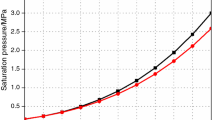Abstract
Today, air management in air-conditioning processes is characterized by low displacement preferences independent of energy loads. Particularly in low-carbon approaches where thermal control management is gaining value, energy sustainability is being shaped together with effective heat management. In the thermal control approaches of air-conditioning systems, low-temperature air distribution together with heat mobility can be seen as an approach for an energy-efficient solution. In this study, first of all, the technical characteristics of the low-temperature air distribution system and its effects on the air-conditioning systems were examined, and the efficiency effects of the distribution system on the air-conditioning potential were evaluated. In the study, the energy efficiency effect of refrigerant preferences was especially assessed. It has been observed that the low-temperature system preference in air handling units varies depending on the refrigerant preference. In fact, it represents an increase in efficiency of 61.95% for R410a fluid and 61.84% for R134a. In addition, the environmental performance index based on entropy production also indicates an advantage of 22.24% for R410A and 25.26% for R134a. At the end of the study, thermodynamic and environmental assessments were made depending on the performance effect of the system.











Similar content being viewed by others
References
Taheri S, Hosseini P, Razban A. Model predictive control of heating, ventilation, and air conditioning (HVAC) systems: a state-of-the-art review. J Build Eng. 2022;60: 105067. https://doi.org/10.1016/j.jobe.2022.105067.
Ning M, Hao Y, Jiaojiao Z, et al. Numerical study on supply parameters’ influence on ventilation performance of a personalized air conditioning system for sleeping environments. J Therm Anal Calorim. 2022;147:11331–43.
Malik A, Bongers C, McBain B, Rey-Lescure O, de Dear R, Capon A, Lenzen M, Jay O. The potential for indoor fans to change air conditioning use while maintaining human thermal comfort during hot weather: an analysis of energy demand and associated greenhouse gas emissions. Lancet Planet Health. 2022;6(4):e301–9. https://doi.org/10.1016/S2542-5196(22)00042-0.
Yau YH, Toh HS, Chew BT, et al. A review of human thermal comfort model in predicting human–environment interaction in non-uniform environmental conditions. J Therm Anal Calorim. 2022;147:14739–63. https://doi.org/10.1007/s10973-022-11585-0.
Krantz, Cold Air Dıstributıon, Krantz Products & Systems Australia Pty Ltd. https://www.yumpu.com/en/document/view/37907105/cold-air-distribution-krantz-products-and-systems-australia
Liu Z, Song F, Jiang Z, et al. Optimization-based integrated control of building HVAC system. Build Simul. 2014;7:375–87. https://doi.org/10.1007/s12273-014-0161-z.
Kwadzogah R, Zhou M, Li S. Model predictive control for HVAC systems—a review. In: 2013 IEEE international conference on automation science and engineering (CASE), Madison, WI, USA, 2013. p. 442–7. https://doi.org/10.1109/CoASE.2013.6654072.
Tassou SA, Leung YK. Energy Conservation in commercial air conditioning through ice storage and air distribution design. Heat Recov Syst CHP. 1992;12(5):419–25.
Ahmeda ST, Mahdib AA, Hussein HMA. A theoretical study for cold air distribution to different supply patterns. Int J Eng Technol IJET-IJENS. 2022;13(4):7–18.
Energystar. Air Distribution Systems, ENERGY STAR Hotline, USA. 2013. https://www.energystar.gov/ia/business/EPA_BUM_CH8_AirDistSystems.pdf.
Okochi GS, Yao Y. A review of recent developments and technological advancements of variable-air-volume (VAV) air-conditioning systems. Renew Sustain Energy Rev. 2016;59:784–817. https://doi.org/10.1016/j.rser.2015.12.328.
Krantz, Cold Aır Dıstrıbutıon, Krantz Products & Systems Australıa Pty Ltd. http://www.krantz.asia/content/tools/articles/air-distribution-cold-air-distribution/article-air-distribution-cold-air-distribution.pdf.
Yu H, Seo S, Mikšík F, et al. (2023) Effects of temperature and humidity ratio on the performance of desiccant dehumidification system under low-temperature regeneration. J Therm Anal Calorim. 2023;148:3045–58. https://doi.org/10.1007/s10973-022-11368-7.
Kiefer, Technical Information Ceiling Induction Cooling System INDULCLIP-DIK, E1908-03/14, Kiefer Luft- und Klimatechnik, Maschinenfabrik Gg. Kiefer GmbH Heilbronner Straße 380–396 70469 Stuttgart, Germany
Åsa Norén-Lundh. Why is induction so important? 08.06.2020, Swegon. https://blog.swegon.com/en/this-why-induction-is-important-for-indoor-comfort.
Elhelw M, El-Maghlany WM. Thermodynamic analysis of two air conditioning systems with ice thermal storage in Egypt. J Therm Anal Calorim. 2020;140:2563–73. https://doi.org/10.1007/s10973-019-08999-8.
Yang B, Melikov AK, Kabanshi A, Zhang C, Bauman FS, Cao G, Awbi H, Wigö H, Niu J, Cheong KWD, Tham KW, Sandberg M, Nielsen PV, Kosonen R, Yao R, Kato S, Sekhar SC, Schiavon S, Karimipanah T, Li X, Lin Z. A review of advanced air distribution methods—theory, practice, limitations and solutions. Energy Build. 2019;202: 109359. https://doi.org/10.1016/j.enbuild.2019.109359.
Igarashi H, Akimoto T, Hatori D, Kato S, Sakakibara H, Kimura M. The effects of an air conditioning system using the Coanda effect on an Indoor Office Environment E3S web conferences, vol. 111 (2019) 01088. 2019. https://doi.org/10.1051/e3sconf/201911101088.
Söğüt Z, Bulgurcu H, Oktay Z. Thermodynamic analysis of air in winter air conditioning with humidification unit. In: IV. Ege Energy symposium, 21–23 May 2008 İzmir, Türkiye (TR).
Cengel Y, Boles M. Thermodynamics: an engineering approach. 5th ed. New York: McGraw Hill; 2006.
Szargut J, Morris DR, Steward FR. Exergy analysis of thermal and metallurgical processes. Lodon: Hemisphere Publishing Corporation; 1988.
Moran MJ, Shapiro HN, Boettner DD, Bailey MB. Fundamentals of engineering thermodynamics. Hoboken: Wiley; 2011.
Van Gool W. Energy policy: fairy tales and factualities. Innov Technol Strateg Policies. 1997;66:93–105.
Ziya SM. New approach for assessment of environmental effects based on entropy optimization of jet engine. Energy. 2021;234: 121250. https://doi.org/10.1016/j.energy.2021.121250.
McQuay. McQuay psychometric analyzer McQuay International, 2023, McQuay Psychrometric Analyzer Software (Psychrometric Chart) (mepwork.com).
Author information
Authors and Affiliations
Corresponding author
Additional information
Publisher's Note
Springer Nature remains neutral with regard to jurisdictional claims in published maps and institutional affiliations.
Rights and permissions
Springer Nature or its licensor (e.g. a society or other partner) holds exclusive rights to this article under a publishing agreement with the author(s) or other rightsholder(s); author self-archiving of the accepted manuscript version of this article is solely governed by the terms of such publishing agreement and applicable law.
About this article
Cite this article
Söğüt, M.Z., Kale, U. & Rohacs, D. Low-carbon approach with the low-temperature air distribution in air-conditioning applications. J Therm Anal Calorim (2024). https://doi.org/10.1007/s10973-024-13049-z
Received:
Accepted:
Published:
DOI: https://doi.org/10.1007/s10973-024-13049-z




